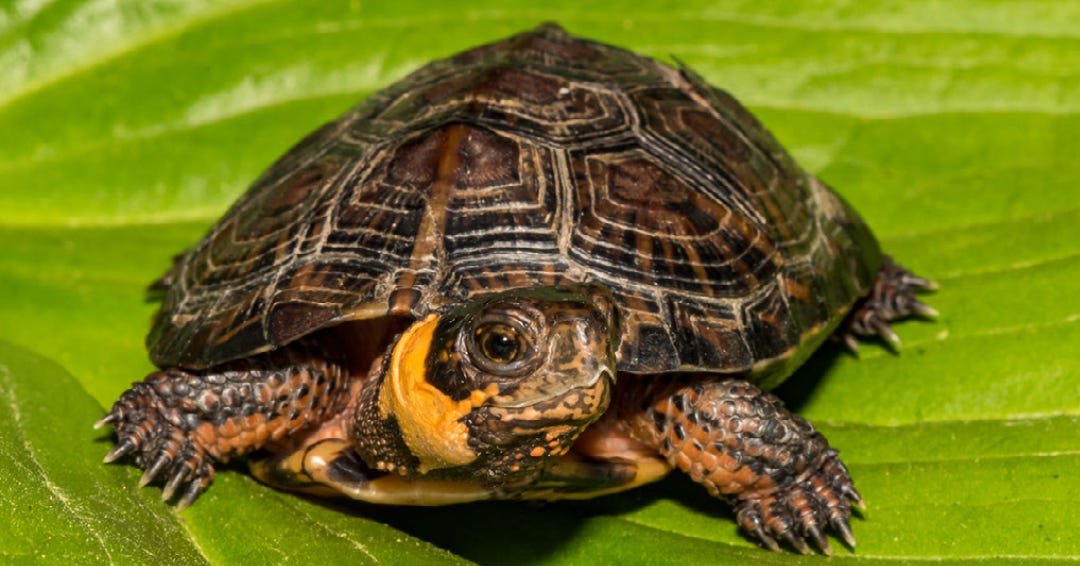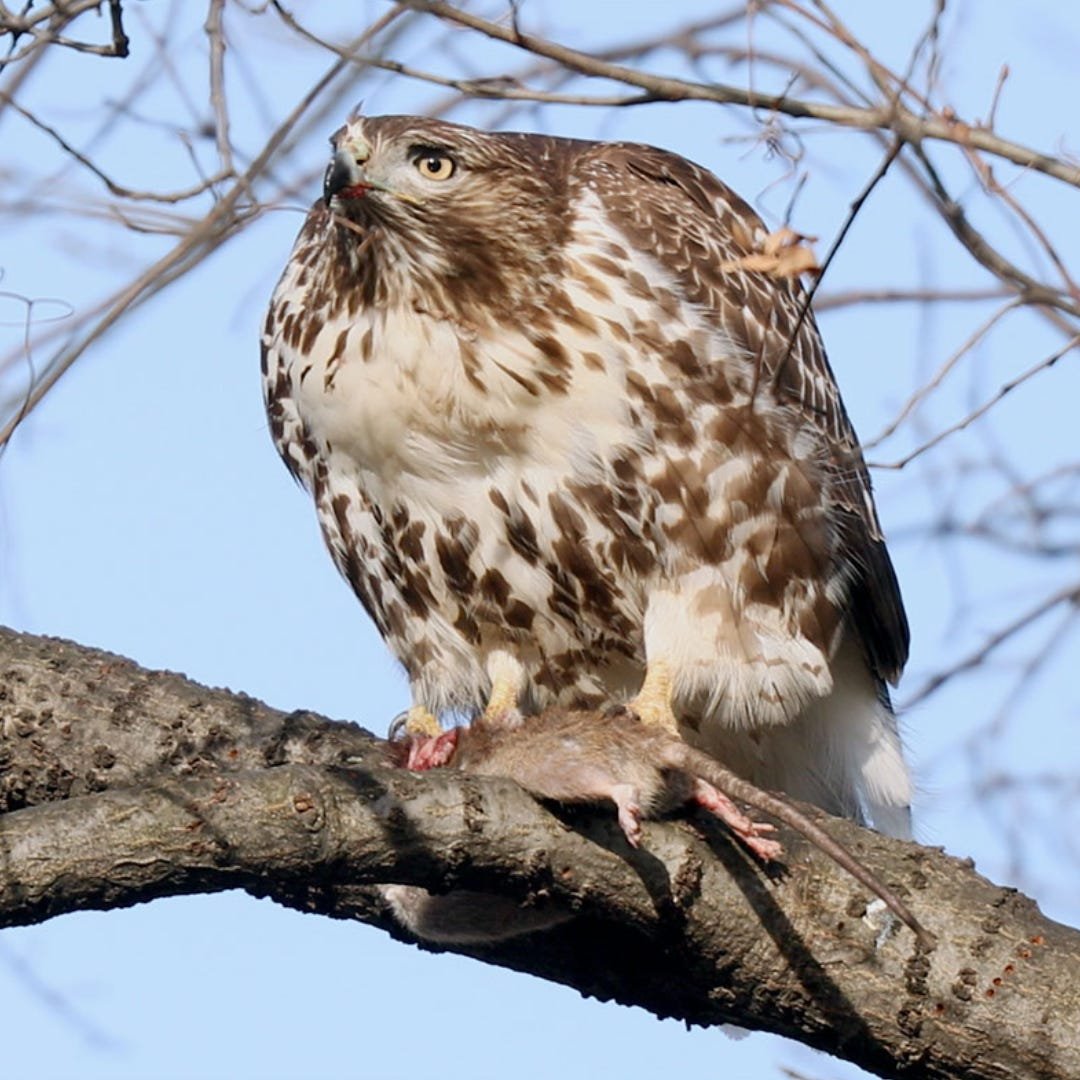Celebrating 6 Months with 6 Rewilding Success Stories
Including new bipartisan legislation to restore native vegetation. Now that's wild.
My dear subscribers,
There are now almost 1,000 of you in 45 states and 14 countries. Many of you have told me you’re changing your yards to support insects, birds, and other wildlife. I am thrilled! And you will be, too, when your yard comes abuzz with bees, birds and butterflies.
To celebrate and encourage your passionate engagement, dear readers, here are six ecological restoration success stories. Next year, I look forward to sharing yours. With 78 percent of American land in private hands, real change must come from a broad group — including each of us.
— The Avant Gardener
1. Plant it and they will come (Gainesville, FL)
Purple gallinules, though not rare in Florida, have suffered from diminishing wetland habitat. The creators of Sweetwater Wetlands Park, a 125-acre waste treatment facility-cum-park (yes), planted endemic alligator flag (Thalia geniculata) hoping its seeds would attract the birds — and it worked. Purple gallinules are now plentiful in the park, one of 264 bird species at this ebird.org Florida hotspot.
Purple gallinule
2. Reintroducing species-specific habitat (Delaware)
Bog turtles, the smallest American turtle, are critically endangered thanks in part to loss of specific native plants, including tussock sedge (Carex stricta). This sedge creates a natural nest, protecting bog turtle eggs from inundation during water level fluctuations in wetlands. Since Mt. Cuba Center and the State of Delaware have planted tussock sedge at an experimental site, clutches of bog turtle eggs have been observed among the reintroduced plants.
3. Tackling invasives (Houston)
By 2012, exotic invasives threatened the food and habitat value of 4,100 acres owned by Houston Audubon Society in the migratory path of hundreds of millions of birds. The society launched a vigorous restoration campaign.
Removal of Chinese privet, a plant that supports few insects and therefore birds, has allowed bird-friendly plants to thrive. Even during my visit last September — a normally slower time for songbirds — I witnessed several kinds of warblers and my second-ever yellow-billed cuckoo taking advantage of this revitalized habitat. . . . The improved habitat has attracted birds and is helping lay the ultimate foundation for protecting them by engaging the region’s human population. — Sneed B. Collard, III, BirdWatching
Yellow-billed cuckoo
4. Bird-friendly farm maintenance (UK)
Farmland bird populations in Europe have declined by more than 50 percent since 1980. In 1999, the U.K.’s Royal Society for the Protection of Birds bought a farm to test techniques to produce food cost-effectively while benefiting wildlife. For example,
At Hope Farm, we cut our hedges and ditches in rotation, once every three years, to produce improved nesting habitat. In addition, these hedges will produce 14 times the weight of berries compared with those trimmed annually, providing vital food for many birds, such as blackbirds and starlings. — RSPB
The result has been an enormous increase in birdlife without negatively impacting farm productivity or profitability. Hope Farm recorded 2,933 birds of 48 species in 2016 compared to 534 birds of 30 species 15 years earlier.
Source: RSPB
5. Rewilding public land (New York City)
When I was growing up in New York City, the only wildlife were cockroaches, pigeons, rats, and squirrels. By the time I raised my children there, we saw fireflies and snakes, too. Now the city is teeming with wildlife: bats and butterflies, bobcats and bald eagles, even tiny seahorses along the Hudson River. This progress, according to Rebecca McMackin, director of horticulture at Brooklyn Bridge Park, has been 40 years in the making:
She credits the work of the city’s Greenbelt Native Plant Center, which opened in Staten Island in the 1980s to save and propagate hundreds of local seeds and plants, for providing the native flora essential to luring back wildlife. The center’s seeds are currently sprouting in Prospect Park and Central Park, and its native grasses have been used to restore dunes in the Rockaways, which are near nesting grounds for endangered shore birds.
“People see cities as degraded,” Ms. McMackin said. “But cities can provide refuge for animals that can’t survive in rural and suburban areas,” largely because of heavy pesticide use on suburban lawns and rural agricultural fields, she explained. — The New York Times
Personally, I am most pleased about the return of raptors to control the rat population.
6. Bipartisan cooperation: A new ecology? (Washington, DC)
Finally, given these proofs that restoring native vegetation can reverse biodiversity decline, this legislative win is worth celebrating, too. On January 5, 2023, the Native Plant Species Pilot Program Act, co-authored by U.S. Senators Susan Collins (R-ME) and Maria Cantwell (D-WA), was signed into law as part of the fiscal year 2023 government funding package. The law will create a new pilot program at the National Park Service and the Bureau of Land Management to support the use of native plants.





